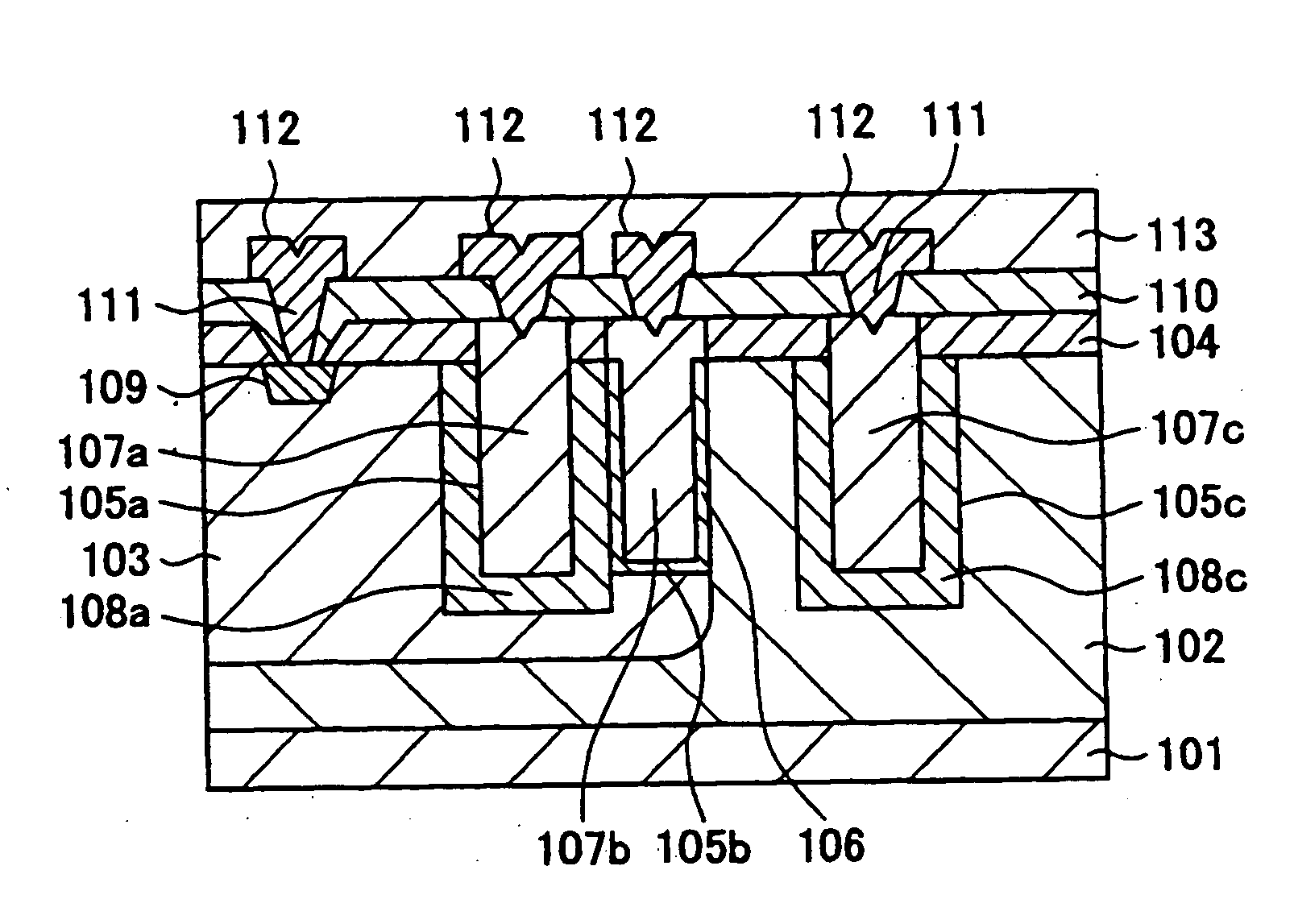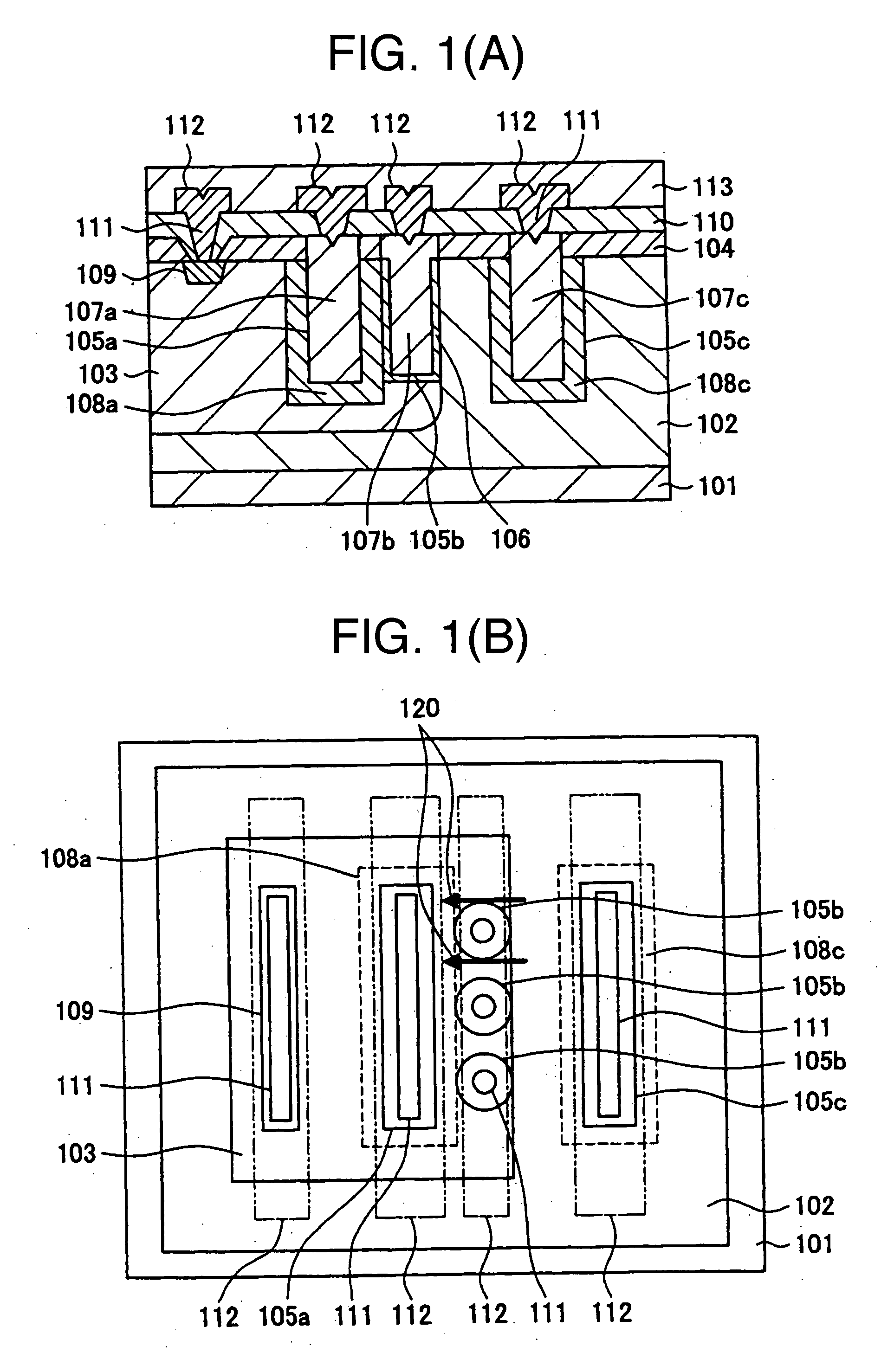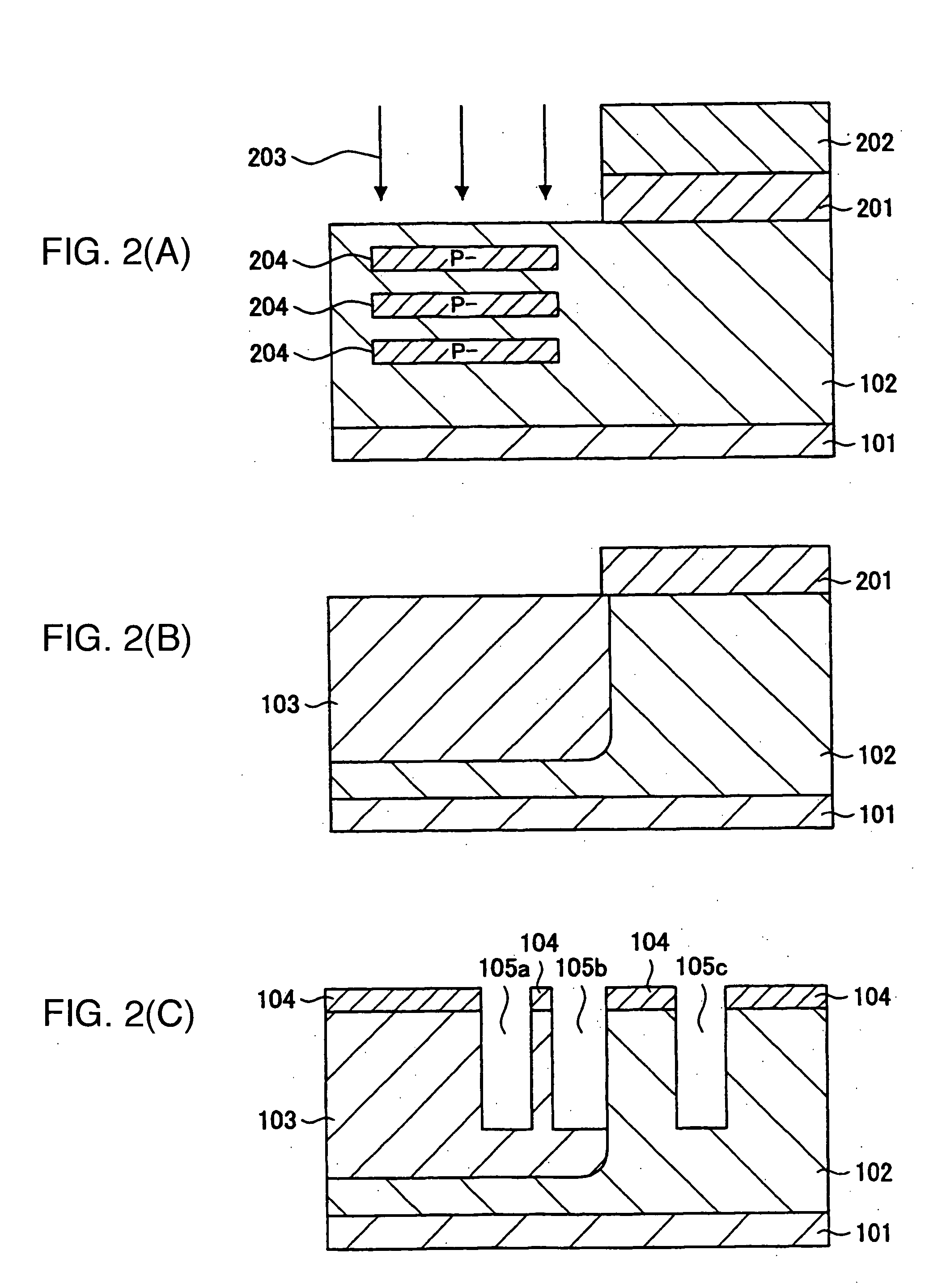A structure of a lateral diffusion mos transistor in widespread use as a power control device
a technology of lateral diffusion mos and transistor, which is applied in the direction of transistors, semiconductor devices, electrical equipment, etc., can solve the problems of limited downsizing of power control systems and large structures that are still required, and achieve the effects of reducing the on-resistance of the device, reducing the size of the power control system, and increasing the curren
- Summary
- Abstract
- Description
- Claims
- Application Information
AI Technical Summary
Benefits of technology
Problems solved by technology
Method used
Image
Examples
first embodiment
[0030]FIG. 1(a) is a sectional view illustrating a trench type LDMOS, that is, a first embodiment of a semiconductor device according to the invention. With the present embodiment, an NMOS is described as an example. The trench type LDMOS comprises an N well layer 102 of a second conductivity type, formed on a p-type semiconductor substrate 101, that is, a substrate of a first conductivity type, a P well layer 103 of the first conductivity type, formed in the N well layer 102, a source electrode 107a, a gate electrode 107b, formed in a source trench cavity 105a, a gate trench cavity 105b, respectively, within the P well layer 103, and a drain electrode 107c formed in a drain trench cavity 105c within the N well layer 102.
[0031] Further, in order to form the source electrode and the drain electrode, an N+ diffused layer 108a which is a first heavily doped region of the second conductivity is formed around the source trench cavity 105a, and an N+ diffused layer 108c which is a second...
second embodiment
[0043] Now, a process of fabricating the n-channel trench type LDMOS according to the first embodiment is described with reference to FIGS. 2(a) through 2(f). First, the p-type semiconductor substrate 101 is prepared. For the substrate, use can be made of a silicon substrate doped with, for example, boron and formed such that sheet resistance thereof has a resistance value at about 10 to 50Ω·cm.
[0044] Subsequently, desired regions of the p-type semiconductor substrate 101 are patterned by use of the well-known photolithography, and thereafter, the N well layer 102 is formed by use of ion implantation techniques and impurity diffusion techniques. The N well layer 102 has a thickness in a range of about 5 to 10 μm. Since the voltage resistance of the LDMOS is dependent on the impurity concentration of the N well layer 102, the impurity concentration is set by taking into account a specification voltage. The impurity concentration is normally on the order of 1 to 5 E 16 cm−3.
[0045] N...
third embodiment
[0061]FIG. 3 is a sectional view illustrating a trench type LDMOS, that is, a third embodiment of a semiconductor device according to the invention. The third embodiment has a feature that an insulating oxide film layer is formed underneath the layer of the second conductivity type as described with reference to the first embodiment. That is, a SOI (Silicon On Insulator) substrate is used in place of the substrate used in the case of the first embodiment.
[0062] First, there is prepared the SOI substrate obtained by forming a polysilicon oxide film 302 as the insulating oxide film layer, on top of a p-type semiconductor substrate 301 doped with boron that is a substrate of a first conductivity type, serving as a support substrate, and further, by forming a silicon layer on the polysilicon oxide film 302. As is well known, for the SOI substrate, use may be made of any of those prepared by use of a lamination process, a doping process by implantation of oxygen ions, and so forth.
[006...
PUM
 Login to View More
Login to View More Abstract
Description
Claims
Application Information
 Login to View More
Login to View More - R&D
- Intellectual Property
- Life Sciences
- Materials
- Tech Scout
- Unparalleled Data Quality
- Higher Quality Content
- 60% Fewer Hallucinations
Browse by: Latest US Patents, China's latest patents, Technical Efficacy Thesaurus, Application Domain, Technology Topic, Popular Technical Reports.
© 2025 PatSnap. All rights reserved.Legal|Privacy policy|Modern Slavery Act Transparency Statement|Sitemap|About US| Contact US: help@patsnap.com



